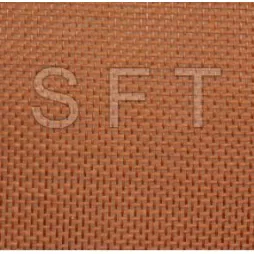Inside the Tire: How Structure Shapes Performance and Safety
Oct. 15, 2025
When it comes to tire structure, many people only know that a tire is divided into the tread, shoulder, and sidewall, but lack a thorough understanding of its internal structure. But don't worry! Today, we'll thoroughly explain the tire's construction, starting from the outside and working our way up.
01 Tread
The tread is the part of the tire that makes closest contact with the road and directly impacts the tire's grip. The thick rubber layer provides the interface between the tread and the road surface. The wear-resistant rubber protects the carcass and belt from damage and damage, extending its lifespan.
02 Sidewall
Located between the shoulder and the bead, the sidewall, with its high elasticity, protects the carcass and enhances the driving experience. While the sidewall is the least resistant to abuse, it provides tire support and shock absorption. Of course, support and shock absorption are often in conflict. This is why run-flat tires (commonly known as run-flat tires) with thicker sidewalls are less comfortable than conventional tires of the same size, yet they can continue to operate at a relatively safe speed even when tire pressure is too low. Another function of the sidewall is to display product information. Important information such as brand, tire width, aspect ratio, diameter, speed rating, production date, and certifications are printed on the sidewall.
03 Shoulder
The shoulder connects the tread to the sidewall. The shoulder has the thickest rubber, so its design must allow for easy dissipation of heat generated by the tire during driving.
04 Bead
The bead is the junction between the tire and the rim. It attaches the tire to the rim at this interface. The bead is covered with a cord and consists of bead wire, chafer Fabric, and other components. It typically fits tightly around the rim and prevents the tire from detaching from the rim in the event of a sudden increase in air pressure.

05 Innerliner
The innerliner is self-explanatory. It is a breathable rubber layer that covers the inner lining of a tubeless tire and the contact surface between the bead and the wheel's bead seat. Its primary function is to prevent compressed air from leaking and maintain tire inflation. It is typically made of highly airtight chlorobutyl rubber or butyl rubber. As we all know, bicycle tires store air in an inner tube, but car tires lack inner tubes, so the inner lining must be extremely airtight to ensure proper tire operation.
06. Car tire plies
The car tire plies are the primary load-bearing structure within the tire. Repairing a tire can lead to a decrease in strength, which is actually caused by an imbalance in the loads on the car tire plies after damage. Because the car tire cord fabrics must simultaneously support both internal tire pressure and external impact, any degree of damage will affect the car tire's structural load capacity.
07. Steel belts
The steel belts, located above the car tire plies, are the foundation of the tire's rigidity. However, their primary function is to resist centrifugal force and withstand lateral forces. In other words, the steel belts determine the tire's speed capability and handling. Sometimes, prolonged drifting can wear out the steel cords in the tire, indicating wear and tear on the steel belts.
08 Nylon Cap Ply
The nylon cap ply sits between the tread and the steel belt. It doesn't bear significant structural loads on the tire itself, but rather serves to stabilize the steel belt and minimize its internal displacement. As its name suggests, the nylon cap ply is primarily made of nylon.
Daily Tire Maintenance
Clean Tread Debris
The deeper the tread, the more pebbles are likely to be trapped, especially on SUVs and off-road vehicles. Before driving, check for pebbles in the tread and use a key to remove them. Pebbles hidden in the tire tread not only make a crackling noise while driving but also reduce the tire's ability to drain water when driving through rainy roads. As the number of pebbles accumulates, braking performance is affected. If you encounter a sharp stone and are unlucky, a blowout is a near-miss.
Pay Attention to Tire Wear
The simplest and most intuitive way to check tire performance and operating condition is to inspect the small triangles on the sidewall. The purpose of the small triangle is to indicate wear. When the triangle mark is reached, the tire has reached its limit and needs to be replaced. Besides the sidewall, the inside of the tire also needs attention. After turning the front wheel all the way to one side, it's crucial to check whether the tread wear on the inside of the left and right front tires is even.
Rotate your tires regularly.
Many experienced drivers rotate their tires after a certain amount of driving, typically rotating the left front tire with the right rear tire, or vice versa, rotating the right front tire with the left rear tire, essentially rotating them diagonally. Regular tire rotations help even out wear on all four tires and help maintain handling balance. It's generally recommended to rotate every 8,000 to 10,000 kilometers. However, for some rear-wheel drive or four-wheel drive vehicles, the front and rear tires may have different specifications, so a full rotation is unnecessary; simply swapping the left and right tires will suffice. Check tire pressure. Tire pressure that's too high or too low can cause unstable tire pressure while driving, leading to a blowout and shortening the tire's lifespan. Open your car door. Most cars have the optimal tire pressure range marked below the B-pillar on the driver's side. Inflate your tires according to the instructions. As temperatures gradually rise, the tire pressure should be lowered appropriately—remember, appropriately!
41
0
0
None
None


Comments
All Comments (0)